10 Best Drawings in the World You Should Know
There is no definitive answer to the question of 'the best drawings in the world of all time' because art is subjective. However, many famous paintings are considered masterpieces by many. In the history of human art, some paintings have transcended time and space to become immortal and bring artistic value to humanity. They are widely recognized and celebrated for their excellence and lasting artistic influence.
Join us to delve into the world of painting and discover the stories behind some of the most iconic and influential works ever created. Here are some of the best drawings in the world that you've probably heard of:
Mona Lisa by Leonardo da Vinci
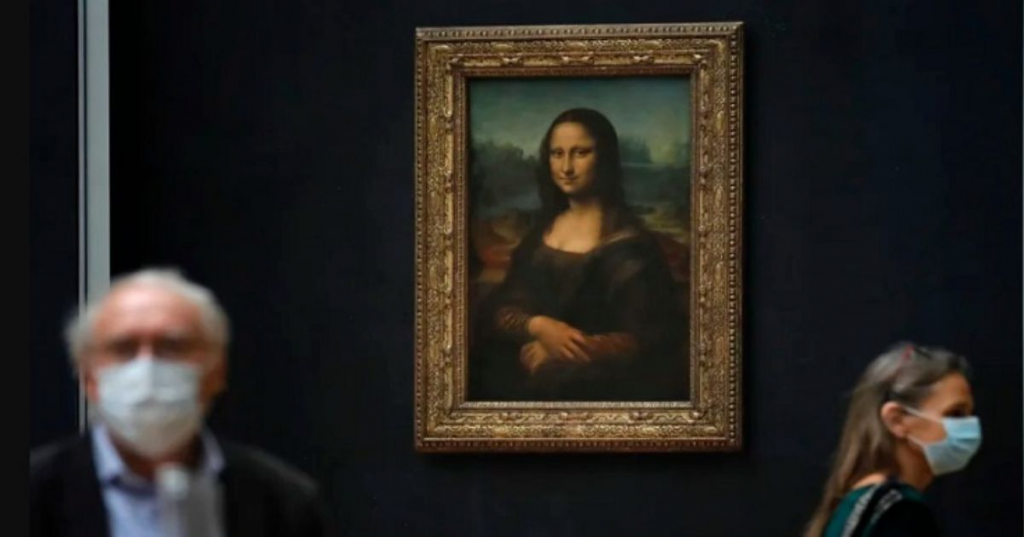
It's no surprise that the world's most famous painting depicts a woman with a mysterious smile. Mona Lisa is said to be one of the most famous and mysterious paintings in the world. Created during the Italian Renaissance in the early 16th century, this masterpiece continues to intrigue and fascinate viewers with its mysterious smile and timeless charm.
The person in the painting is believed to be Lisa Gherardini, wife of Florentine merchant Francesco del Giocondo, but many experts are uncertain.
Before the 20th century, historians believed that the Mona Lisa masterpiece (currently worth up to 670 million USD) was lesser-known outside the art world. But in 1911, a former employee of the Louvre Museum stole the portrait and hid it for two years. That theft helped cement the painting's place in popular culture.
What makes the Mona Lisa so captivating is not only its technical brilliance but also the sense of intrigue and ambiguity surrounding it. Leonardo da Vinci's meticulous attention to detail and masterful use of light and shadow created an unparalleled sense of depth and realism. The subject's mysterious smile has sparked endless speculation and debate, adding to the mystery and enchantment of the painting.
Perhaps what truly sets the Mona Lisa apart is its ability to transcend time and culture. Although it is more than 500 years old, it remains as relevant and attractive as ever, attracting millions of visitors to the Louvre Museum in Paris each year. When looking at the painting Mona Lisa, we are attracted to a mysterious and fascinating world where the line between reality and imagination blurs.
The Creation of Adam by Michelangelo
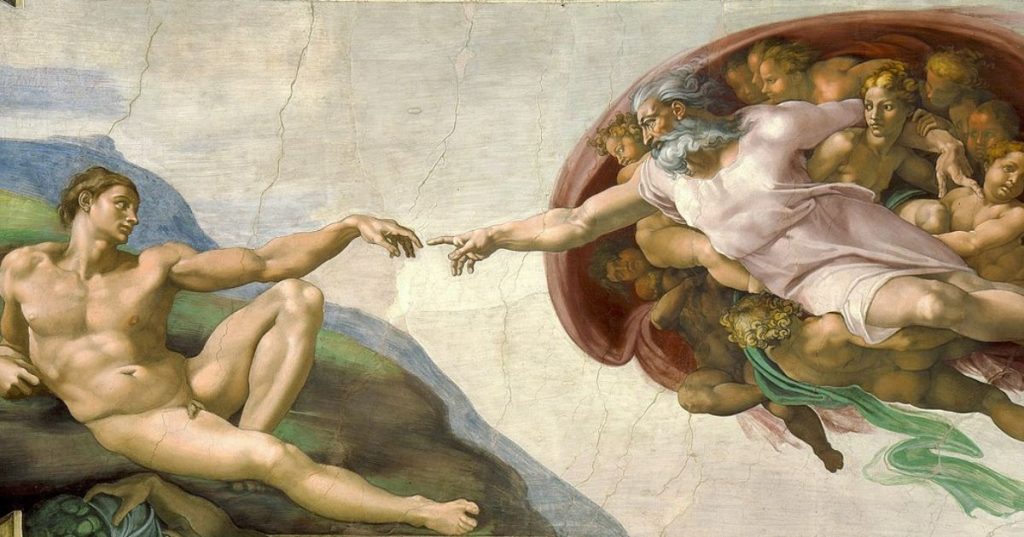
The Creation of Adam is one of Michelangelo's most famous paintings, part of the ceiling of the Sistine Chapel in Vatican City. This painting was completed around 1512 and is one of the pinnacle works of art of the Renaissance.
Michelangelo's most famous work covers part of the ceiling of the Sistine Chapel. It is one of the most copied paintings in history.
The ceiling of the Sistine Chapel has become stained from centuries of exposure to candle smoke, among other things. After a cleaning process of the painting that lasted until 1989, many people were shocked to see the bright, vibrant colors that Michelangelo originally used.
The painting shows the scene of God the Father imparting the breath of life into Adam, who was created to be the first man. The encounter between God's finger and Adam's finger creates a meaningful moment of creation and the connection between man and the Creator.
Michelangelo demonstrates sophistication in detail and proportion in drawing the figures of God and Adam. From the strong and balanced features of the body to the soft light and deep shadows, this painting contains delicacy and a profound grasp of form and emotion.
The Creation of Adam is not only a work of art but also a religious symbol of creation and the interaction between man and God. The wonder and power of creation are expressed through the emotions and expressions on Adam's face and in the eyes of God.
The Starry Night by Vincent van Gogh
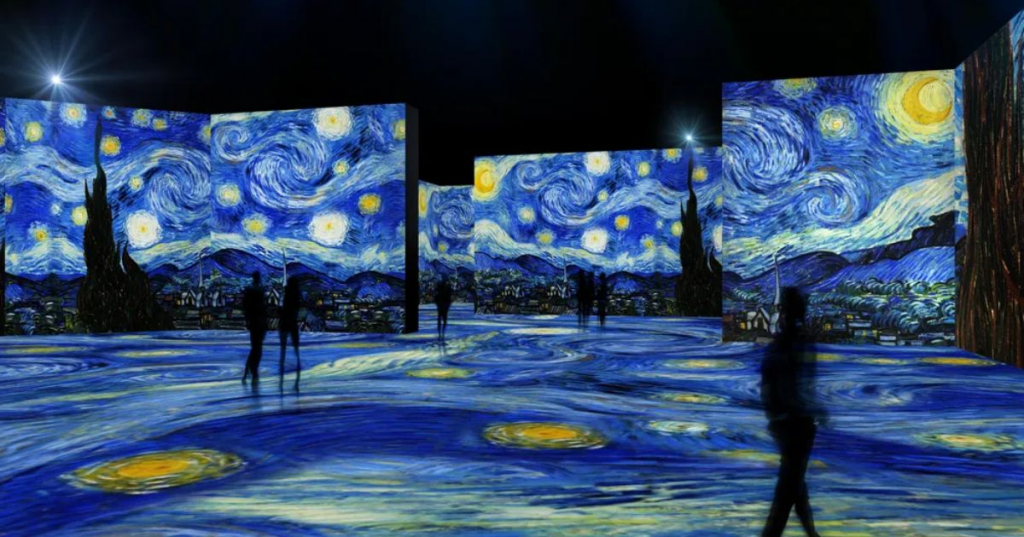
The Starry Night is one of Vincent van Gogh's most famous works, painted in 1889 while he was being treated at a mental hospital in Saint-Rémy-de-Provence, France. This painting shows a night scene on the outskirts of Saint-Rémy, with a starry night sky and a powerful cypress.
The beauty of The Starry Night lies in the magic of nature, the subtleties of color and emotion, and the expressive power it conveys.
This painting contains a deep feeling of loneliness and a spirit of adventure. Van Gogh chose a personal perspective to express his feelings of insecurity and loneliness.
Especially, the relatively abstract painting is a prime example of van Gogh's bold and creative use of brushwork. Van Gogh used strong and intense colors, such as cobalt blue and yellow, to create a night sky scene full of life. The light of the stars and moon creates a sparkling reflection effect on the surface of the cypress trees and the countryside below.
This iconic painting by Dutch artist Vincent van Gogh is known for its swirling, expressive brushstrokes and vivid colors. It has become one of the most recognizable and celebrated works of art in the world.
Guernica by Pablo Picasso
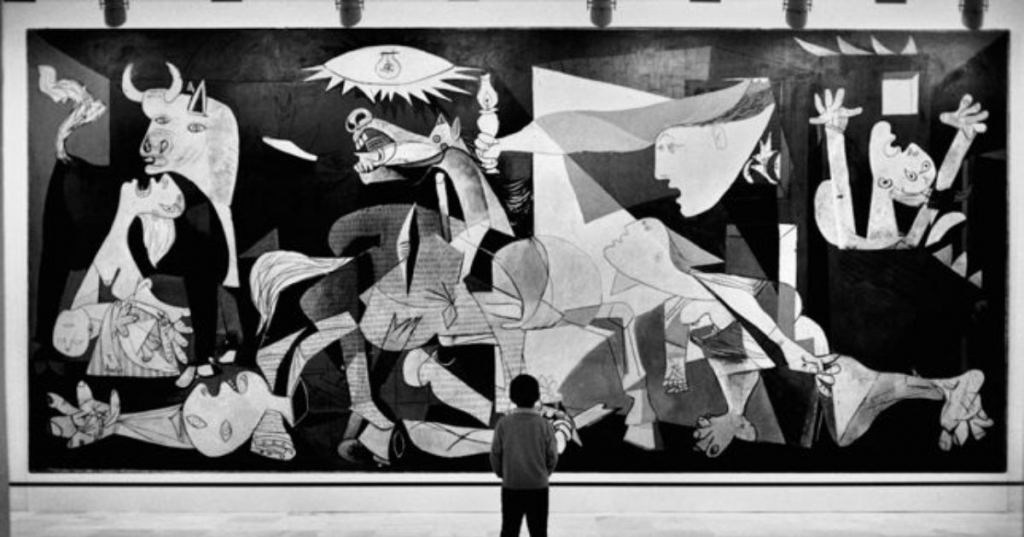
Guernica is one of Pablo Picasso's most important works of art, created in 1937 as a reaction against the disaster of the Guernica bombing during the Spanish War. This painting shows a scene of carnage and chaos, with Picasso's signature symbolic images and colors.
The painting's signature take on the horrors of war has made it an essential part of 20th-century culture and history.
Guernica was moved to the Metropolitan Museum of Art in New York during World War II for safekeeping. Picasso requested that the work's retention period be extended until democracy returns to Spain. The painting finally returned to Madrid in 1981, six years after the death of Spanish dictator Francisco Franco.
The beauty of Guernica lies in its expressive power and deep meaning. Guernica presents a very expressive picture, with painful and horrifying images of victims of the bomb attack. The tension, fear, and chaos are powerfully transmitted through emotions on the faces of those affected.
Guernica is a strong statement against war and violence. Picasso used painting as a means to reflect and protest the brutality of the bombing and to send a message about the pain and loss that war brings.
Although Guernica can be seen as a picture of chaos and horror, it also contains a profound message of hope. Picasso created a complex work with many layers of meaning, evoking reflection and emotion in the viewer.
The Scream by Edvard Munch
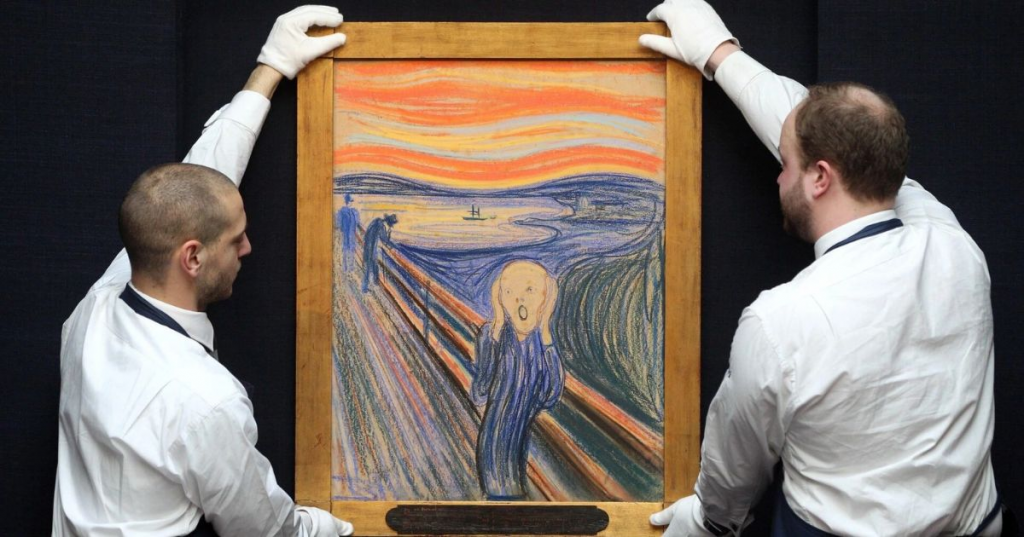
The Scream by Edvard Munch is an iconic masterpiece that captivates viewers with its haunting and evocative imagery. The beauty of The Scream lies in its raw emotion and powerful symbolism. Munch masterfully portrays a figure standing on a bridge, clutching their face in agony as are engulfed by a swirling vortex of color and distortion. The sky is painted in bold hues of orange and red, adding to the sense of turmoil and unease.
You should know that The Scream is not a single work of art. According to the British Museum, there were two pastels and an unknown number of other drawings. The paintings are in the National Museum and the Munch Museum (Norway). In 2012, one of the two pastel paintings was auctioned for nearly 120 million USD.
What sets The Scream apart is its ability to evoke a visceral response from viewers. It speaks to the universal experience of anxiety and despair, tapping into the depths of human emotion in a way that few artworks can. Munch's use of exaggerated forms and intense colors creates a sense of disorientation and chaos, drawing the viewer into the tumultuous world of the painting.
The Last Supper by Leonardo da Vinci
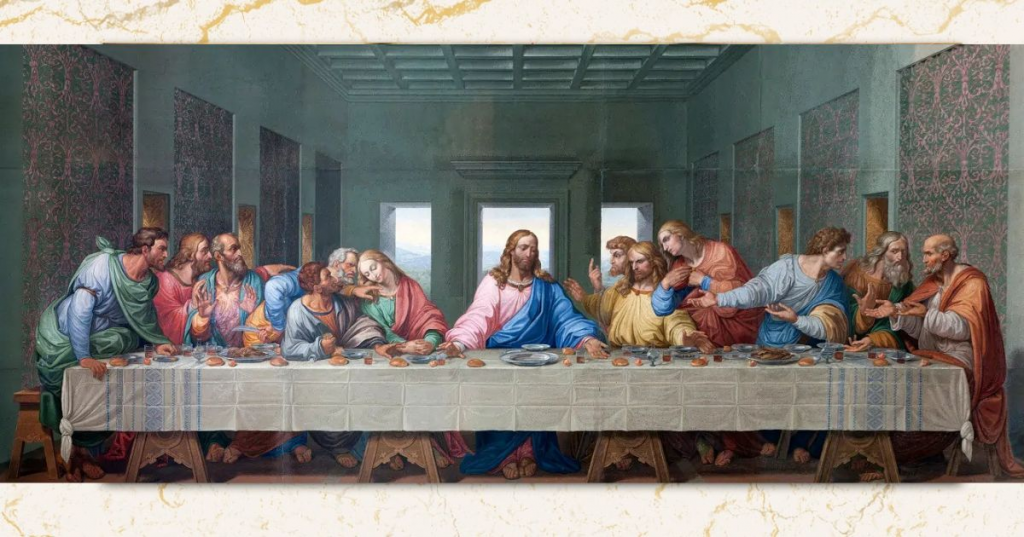
The Last Supper by Leonardo da Vinci stands as one of the most iconic and influential paintings in the history of Western art. This masterpiece was created between 1495 and 1498, it depicts the biblical scene of Jesus Christ's last meal with his disciples before his crucifixion.
The painting is truly a giant fresco: 4.6 m high and 8.8 m wide. The work survived the two wars of Napoleon and Nazi Germany.
In this painting, Leonardo da Vinci masterfully captures the emotional intensity and drama of the moment, portraying the reactions of each disciple to the shocking revelation that one of them would betray Jesus. The composition, with Jesus at the center surrounded by his twelve apostles, creates a sense of symmetry and balance that draws the viewer into the scene.
What sets The Last Supper apart is Leonardo's innovative use of perspective and composition. The painting is renowned for its meticulous attention to detail, from the intricate architectural elements of the room to the subtle expressions and gestures of the figures. The use of light and shadow adds depth and dimension to the scene, creating a sense of realism.
But perhaps the most remarkable aspect of The Last Supper is its ability to convey the complex emotions and relationships between the figures. From the anguish of Judas Iscariot to the disbelief of the other disciples, Leonardo da Vinci captures the range of human emotions with astonishing clarity and sensitivity.
Les Demoiselles d'Avignon by Pablo Picasso
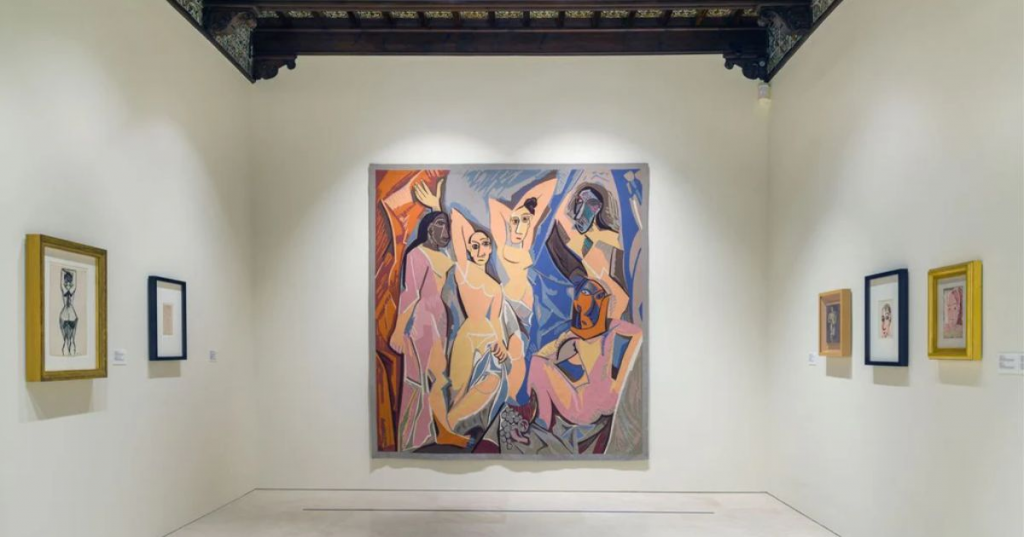
The Girls of Avignon (Les Demoiselles d'Avignon - 1907) is a typical example of Pablo Picasso's mastery of cubism. This work of art caused an uproar when it was displayed to the public because of its non-traditional depiction of nude women. The women in the painting have an angular appearance, are not feminine, and do not seem shy when naked. With this work, Picasso wanted to assert himself as one of the great artists of that time, and the truth proved that he achieved that goal.
Additionally, this painting marked a major transition in Picasso's style and approach to art. Les Demoiselles d'Avignon breaks traditional principles of proportion, form, and style, opening up a new world of creative freedom.
Les Demoiselles d'Avignon is a statement of disruption and confrontation with social and emotional norms and sex. Picasso renewed the theme of his paintings of the goddess Venus and the girls of the church, turning them into a declaration of freedom and personal independence.
The Great Wave off Kanagawa by Hokusai
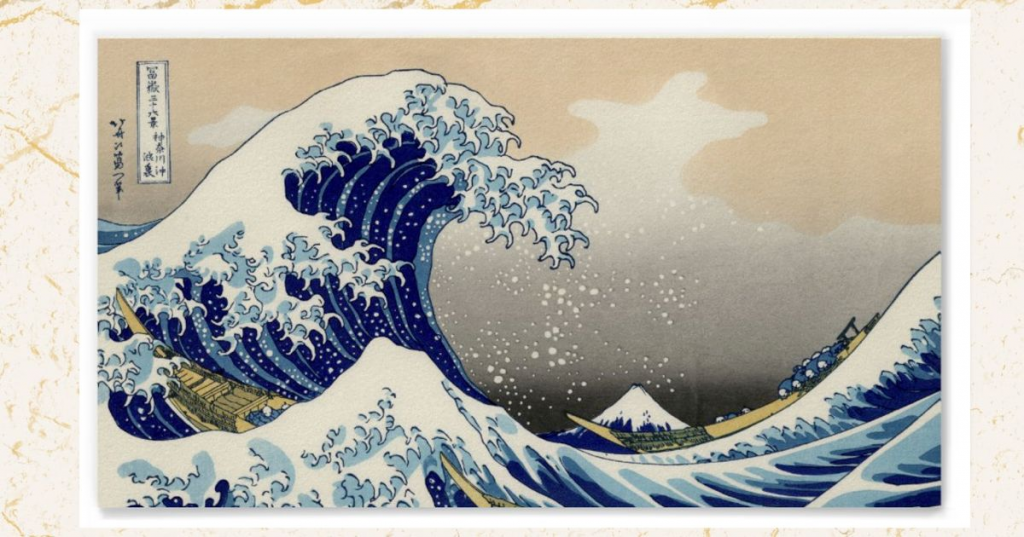
Those who love Japanese culture are probably no strangers to the painting The Great Wave off the Coast of Kanagawa. The timeless masterpiece The Great Wave off the Coast of Kanagawa painted in the Ukiyo-e style of famous artist Hokusai is considered one of the most iconic drawings in Japanese. In this painting, Hokusai depicts an image of a giant wave off the coast of Kanagawa town (now Yokohama City, Kanagawa Prefecture), and in the distance is Mount Fuji. This painting is part of the series Thirty-six Views of Mount Fuji published between 1829 and 1833.
Hokusai, the author of this masterpiece, simultaneously studied Japanese and European works. In particular, he was inspired by linear perspective in Dutch art, a method used to draw three-dimensional images in two-dimensional space. That is evident in the low horizon detail, while the European influence is most evident in the Prussian blue – a fairly popular color at the time.
Although the name and 'main character' of The Great Wave off the Coast of Kanagawa are about the waves offshore, let's look more closely at the center. What many people often mistake for a wave is snow-capped Mount Fuji - the highest peak in Japan. We can see that, although the painting style is deeply influenced by European art, the artist still did not forget to infuse his work with the unique cultural imprint of his country.
Girl with a Pearl Earring by Johannes Vermeer
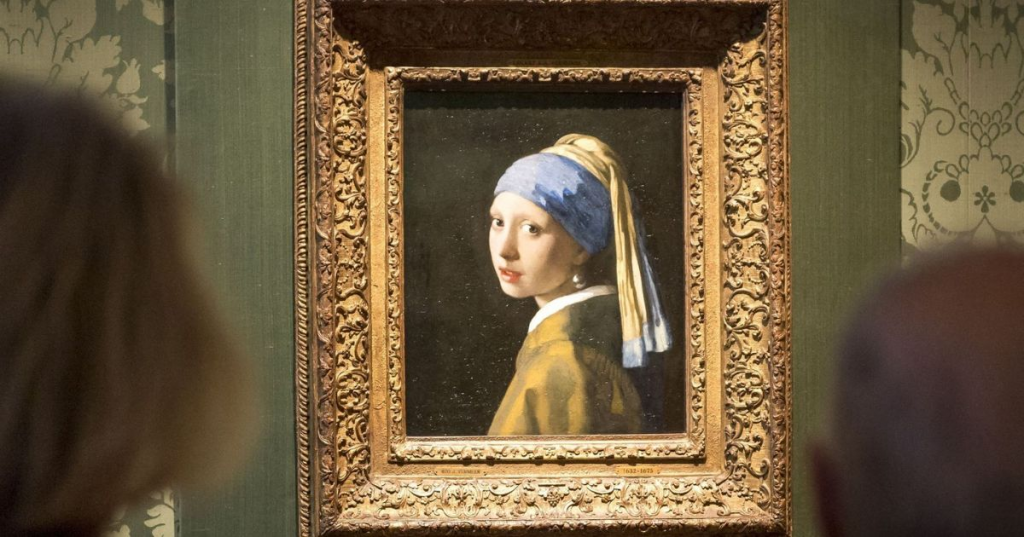
One of Vermeer's most famous works is Girl with a Pearl Earring, painted in 1665, 10 years before Vermeer's death. Currently, the painting is hanging at the Royal Moritz Museum (Mauritshuis), De Haag, Netherlands. In 2006, it was voted the most beautiful painting in the Netherlands. The work differs from Vermeer's other paintings because its content is simply the head and shoulders of a young woman against a dark background.
This drawing has spawned many interpretations in literature and poetry, with many speculating about her identity and the reason for her unusual dress. She was looking through the picture frame, and her lips slightly parted - a pose that created a feeling of intimacy and understanding.
Some critics have questioned the material of pearl because of its size and shine, making pearl more likely to be made of silver or pewter. Other critics say it is a large pearl and is a strange element in the young woman's outfit.
Girl with a Pearl Earring by Johannes Vermeer is a captivating masterpiece that continues to enchant viewers with its timeless beauty and enigmatic allure.
But perhaps what truly sets Girl with a Pearl Earring apart is the sense of intimacy and connection it evokes. Vermeer's portrayal of the girl's enigmatic expression invites viewers to ponder the emotions behind her gaze, sparking endless speculation and interpretation. The painting's timeless beauty and universal appeal have made it an enduring symbol of artistry.
The Vitruvian Man by Leonardo da Vinci
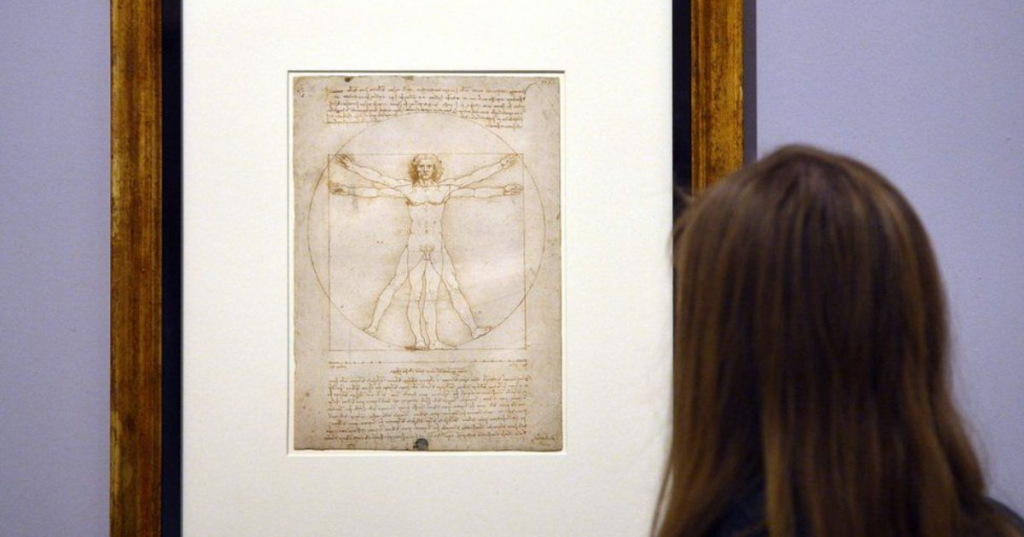
The painting Vitruvian Man is a work by Leonardo da Vinci made around 1490, currently kept at the Gallerie dell'Accademia gallery in Venice, Italy. Although this is not a large painting with meticulous colors, but just a drawing on a handwritten page showing Leonardo's research on the human body, Vitruvian Man is well-known.
This work is the symbol of the proportions and balance of the human body. Furthermore, it truly combines art and science during the Renaissance.
The work depicts a man standing in two different poses: one in which the arms and legs are aligned in a circle and one in which the arms and legs are postured in a square shape. This painting refers to the ideas of Marcus Vitruvius Pollio, an ancient Roman architect, about the perfection of human mechanics proportion, and geometry.
Vitruvian Man is not only an artistic icon but also a cultural and scientific icon. It represents sophistication and perfection in basic human proportions, as well as the Renaissance spirit of discovery and understanding.
Enhance your expertise with Skilltrans through their curated selection of related courses. Please click on the course name below to learn more:
Cartoon Drawing For Absolute Beginners
You will learn how to draw cute cartoon characters. Also, you will learn how to draw simple cartoon backgrounds. We’ll start with the basics. For example whats the anatomy of our cute cartoon characters and what shapes we’ll use to draw them. Then we’ll jump into different facial expressions so that you can express emotion with your characters. Also different hairstyles, a lot of practice sheets, and many more.
Drawing and Colouring: Birds and Flowers (Art as Meditation)
Nature influences art in many we can't imagine art without nature. As it is the source of inspiration for every artist, its the best way to start learning art through nature. Its a kind of meditation in which we relate ourselves with the beauty of nature. When you indulge yourself in activities related to nature you feel calm and relaxed.
In this course you will learn to make beautiful leaves, flowers and exotic and beautiful birds which will not only enhance your painting.
Character Art School: Complete Coloring and Painting
Character Art School is a 6 week learn-anywhere video course where you learn to become adept at coloring and painting professional characters. I’ve hand-crafted the Character Art School: Complete Coloring and Painting course to be the only course you need, to learn all the core fundamentals and advanced techniques to coloring and painting characters well. If you’re an absolute beginner or you’re already at an intermediate level, the course will advance your current ability to a professional level. The course is a comprehensive 5 module guided video course, where the only limit to your progression is your determination and engagement in the rewarding assignments.
Conclusion
These are just a few examples of the many famous drawings that are considered to be among the best in the world. The beauty of art lies in its diversity and the endless possibilities for interpretation and appreciation. Ultimately, the best drawings can speak to you personally and move you somehow.
Art always has the ability to open up endless creative horizons. To be able to explore this world of art to the fullest, sign up for Skilltrans courses today.

Meet Hoang Duyen, an experienced SEO Specialist with a proven track record in driving organic growth and boosting online visibility. She has honed her skills in keyword research, on-page optimization, and technical SEO. Her expertise lies in crafting data-driven strategies that not only improve search engine rankings but also deliver tangible results for businesses.



